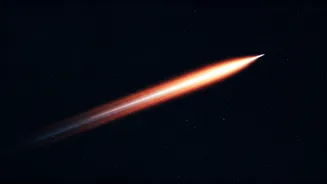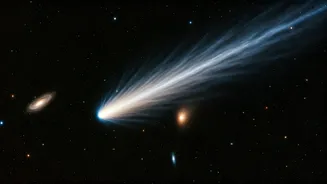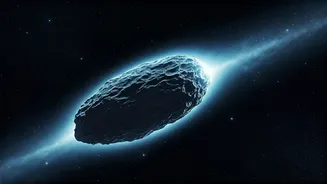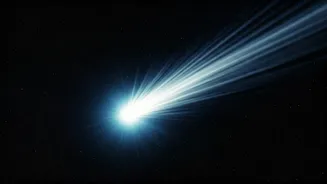A Cosmic Enigma
Comet 3I/ATLAS, a celestial body of significant size, has captivated the scientific community and the general public, leading to widespread speculation
about its origin and potential implications. The comet's trajectory and behavior have fueled discussions about whether it could be a 'black swan' event – a highly improbable occurrence with severe consequences. Theories range from it being a previously unknown natural phenomenon to the more outlandish suggestion that it might be a hidden alien ‘mothership’. The unexpected nature of 3I/ATLAS prompted a closer examination by astronomers, who are carefully studying its characteristics and movements to determine the true nature of the celestial traveler. This has led to enhanced vigilance in the scientific community, as experts try to understand the comet's potential impact on our solar system.
Unforeseen Implications
The potential of 3I/ATLAS being a 'black swan' event has caused scientists to take a proactive approach. Such an event, according to theoretical physicists, could have consequences that are difficult to predict, leading to global disruption. The comet's characteristics and the lack of full understanding of its composition and trajectory add to the uncertainty and risk. A black swan event is defined by its rarity, its severe impact, and its retrospective predictability – only after the event occurs. Therefore, the attention focused on 3I/ATLAS is largely due to the limited knowledge of the object and the potential for a scenario that is completely unexpected. The unpredictability of its behavior and potential interactions with other celestial bodies mean that the consequences could be varied and far-reaching, which requires continuous monitoring and evaluation.
NASA's Perspective
NASA plays a critical role in addressing concerns related to 3I/ATLAS. According to NASA, the agency's primary stance is to remain vigilant while maintaining that there is no immediate threat to Earth. This cautious approach involves continuous observation of the comet, using a variety of tools such as telescopes and space-based observatories to collect data. The data obtained are then carefully analyzed by scientists to improve their understanding of the object’s trajectory, composition, and potential hazards. NASA’s careful assessment is crucial for reassuring the public while the scientific community conducts its investigations. Despite the intense speculation and the many theories around 3I/ATLAS, NASA remains committed to a data-driven approach based on scientific evidence, with ongoing communication with the public as the comet’s journey continues.












